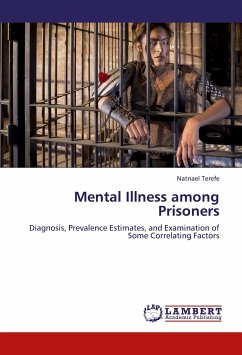This book mainly focuses on issues of diagnosis, identification of factors associated with mental illness, and approaches to promote mental health in incarcerated people. Due to many factors in prisons that have negative effects on mental health, including: overcrowding, various forms of violence, lack of privacy, lack of meaningful activity, isolation from social networks, and insecurity about future prospects, mental health problems are expected to be more prevalent in prison population than those found in comparable community samples. The empirical research findings reported in this book can contribute some valuable data to the scarcely available study findings on the magnitude of mental disorders in prisons thereby creating awareness concerning the extent to which mental health problems are threatening in prisons. Prevalence data on specific mental disorders have practical importance for two important purposes: First they are required for scientific understanding of a disorder which will enable us to describe association, etiology, natural history and identification of new syndromes. Secondly they are also of vital importance for planning and evaluation of mental health.
Bitte wählen Sie Ihr Anliegen aus.
Rechnungen
Retourenschein anfordern
Bestellstatus
Storno








